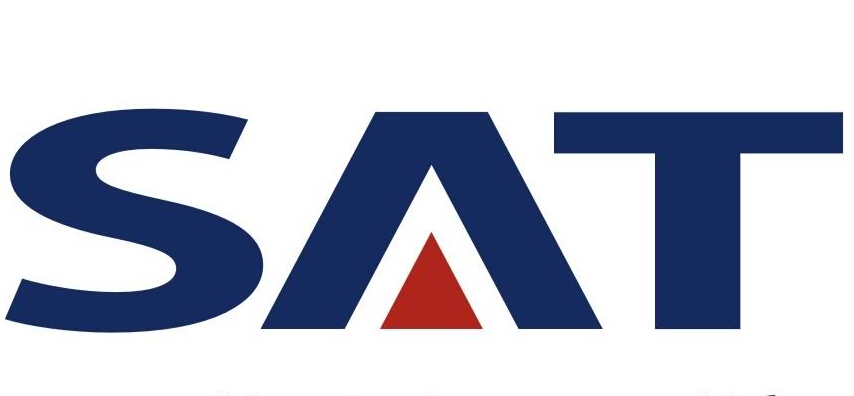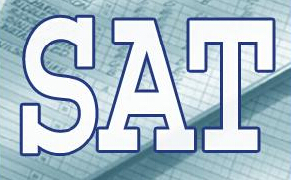SAT考试人数不敌ACT考试 SAT考试将被重新设计
2013-03-12 00:00 供稿单位: 互联网
出国英语考试有哪些 雅思6.5是什么水平 雅思阅读评分标准 托福阅读评分标准 雅思和托福的区别
College Board 将会对SAT考试进行一次彻底的变革,他们把这次改变称作从“有雄心的努力”到“更加满足学生和学校的要求”的转变。
1926年,SAT考试举办。不到十年前,“篇章写作”引入 SAT 考试中,同时,SAT 的考察方式也发生了改变。去年,SAT考试参加人数少于ACT考试的参加人数,两者相比,相差几千人。
College Board作为一家非盈利组织,去年晚些时候,任命了新的领导人,David Coleman。而David Coleman也是“美国各州共同核心课程标准”的共同作者。
下文是 College Board 给所有成员的一封信:
在未来的几个月中,College Board 将会与它的同伴共同努力,使SAT考试更加符合位于不同层级的同学,中学和大学的要求。
我们将会设计一种评估机制,使它能够反映出学生们将要在大学生所从事的工作。这样,学生可以训练他们完成大学学业所需要的技能。
改革之后的SAT考试,将会把主要目光集中在学生适应大学和未来工作要求的核心知识和能力上。
这将是一个非常有雄心的改革,它只有在我们董事会的领导之下,在我们各个委员会之间强有力的协调之下,以及我们所有成员的全身心付出的情况下,才能成功完成。
自从1926年开始运作以来,SAT一直致力于通过更加民主的方式,使所有的学生进入大学深造。College Board需要为每年参加SAT考试的数百万学生负责,保证我们的考试项目更够满足大家不断涌现出的各种需求。
在进行SAT重新设计的过程中,我们主要关注以下三点内容:
1. 把 SAT 考察重点聚焦在对大学和职业生涯的成功有重要价值的方面;为学生在大学中取得成功,并实现学生从学校向工作方面的成功转变提供更多的机会;同时,保证公平和公正。
2.增加SAT考试对于高等教育从业人员的价值,使它满足招生官员,大学教师以及其他管理者们日益增长的需要。同时,努力使SAT考试继续成为学生在大学阶段取得成功的可靠预测者。
3. 通过加强 SAT 考试与大学以及工作准备方面的一致性,增加SAT考试对于K–12教育者,管理者们的价值。
保证考试内容可以在课堂指导中,反映出卓越的一面。同时,建立对比机制,从而允许教育者使用SAT考试结果,改进课程表和课堂指导。
对于College Board的改革声明,Bob Schaeffer (来自非营利机构 FairTest) 给出了自己的看法:
College Board对于重新设计SAT考试方式的方案,说明他们从2005年引入的“新 SAT”考试机制,是失败的。“新 SAT”的考试机制并不如之前的考察形式那样,可以多样化的体现学生的能力。明显的改变,只是它变得更长,同时使考生花费更多的钱。
于是,很多大学开始采用选择性考试机制,或者灵活性考试机制。这最终导致了ACT考试人数在全国范围内超过SAT考试的参加人数。
最终,新的College Board管理层别无选择,只好尝试重组 SAT 考试设计,从而保证市场占有率。
以下是网友的评论:
1. 作为一位以前的高中英语教师,我认为,College Board 很难做出什么改变。我记得当年他们取消了类比测试,因为这对于学生们来说,太难了,他们很难通过阅读,找出词和词之间的关系。
2. 很多时候我在想,为什么好多中国同学,英语并不流利,却能够在数学,物理学和化学中成绩出类拔萃?
我认为,原因主要是:
如果我写“1+2 = 3”,每个国家的人都可以用自己国家的语言把它读出来。
但是,如果我写“one plus two equals three”,就只有哪些会说英语的人才能理解了。
种表达方式,用阿拉伯文字书写,而第二种,使用英语方式书写。
3. SAT 肯定需要在十年之内,进行第二次改革。因为,中学的毕业生们,开始变得越来越傻。
跟帖:
我不会把他们称作“傻子”,但是,他们真的是没有准备好进入大学。改进社区大学将会是一件好事,但是我们还有很长的路要走。如果每个孩子都能都能够进入正确的大学项目,重组考试标准的努力,就可以不用做了。
SAT exam to be redesigned
The famed SAT college admissions exam will undergo a thorough redesign by the College Board, which is calling it an “ambitious effort” to “better meet” the needs of students and schools.
The SAT, first given in 1926, was revamped less than a decade ago when a written essay was added and some of the question formats were changed. Last year, for the first time, it lost its designation as the most popular college admissions exam to the ACT, by a margin of a few thousand students.
The College Board, the nonprofit organization that owns the SAT, late last year appointed a new president, David Coleman, who was a co-writer of the Common Core State Standards. In a recent speech at the Brookings Institution, Coleman said he has a number of problems with the SAT as now written, including with its essay and vocabulary words. (You can read about that here.)
College Board Vice President Peter Kauffmann said the following e-mail was sent to all members of the College Board:
In the months ahead, the College Board will begin an effort in collaboration with its membership to redesign the SAT® so that it better meets the needs of students, schools, and colleges at all levels. We will develop an assessment that mirrors the work that students will do in college so that they will practice the work they need to do to complete college. An improved SAT will strongly focus on the core knowledge and skills that evidence shows are most important to prepare students for the rigors of college and career. This is an ambitious endeavor, and one that will only succeed with the leadership of our Board of Trustees, the strong coordination of our councils and committees, and the full engagement of our membership.
First administered in 1926, the SAT was created to democratize access to higher education for all students. Today the SAT serves as both a measure of students’ college and career readiness and a predictor of college outcomes. In its current form, the SAT is aligned to the Common Core as well as or better than any assessment that has been developed for college admission and placement, and serves as a valuable tool for educators and policymakers. While the SAT is the best standardized measure of college and career readiness currently available, the College Board has a responsibility to the millions of students we serve each year to ensure that our programs are continuously evaluated and enhanced, and most importantly respond to the emerging needs of those we serve.
As we begin the redesign process, there are three broad objectives that will drive our work:
• Increase the value of the SAT to students by focusing on a core set of knowledge and skills that are essential to college and career success; reinforcing the practice of enriching and valuable schoolwork; fostering greater opportunities for students to make successful transitions into postsecondary education; and ensuring equity and fairness.
• Increase the value of the SAT to higher education professionals by ensuring that the SAT meets the evolving needs of admission officers, faculty, and other administrators, and that the SAT remains a valid and reliable predictor of college success.
• Increase the value of the SAT to K–12 educators, administrators and counselors by strengthening the alignment of the SAT to college and career readiness; ensuring that the content reflects excellence in classroom instruction; and developing companion tools that allow educators to use SAT results to improve curriculum and instruction.
Bob Schaeffer, public education director of FairTest, a nonprofit organization dedicated to ending the misuse of standardized tests, said this about the redesign:
The College Board’s announcement that it plans to revise its flagship exam, less than eight years after the previous “major overhaul” of the test was first administered, is an admission that the highly touted “new SAT” introduced in 2005 was a failure. The latest version of the test is, in fact, no better than its predecessor in predicting academic success in higher education or in creating a level playing field to assess an increasingly diverse student body. The only significant changes were that it was longer and cost test-takers more. As a result, more than 80 additional institutions have adopted test-optional or test flexible policies (attached), and the ACT overtook the SAT as the nation’s most popular exam for colleges which still require a test. Those developments left the new College Board leadership with no choice but to try to “reformulate” its product in an effort to maintain market share and relevance.
Comments :
1. Some people seem to be under the illusion that the ACT tests scientific knowledge because it has a section deceptively called "science." All it measures is your ability to interpret accurately charts and graphs. The content is irrelevant and you need no prior science knowledge to score well. I tutor kids for the ACT; I've seen this over and over again. It's absolutely an easier test and kids know it.
2. As a former high school English teacher, it's hard to see how they can do anything but dumb it down. I remember when they dropped the analogies from the test. Why? It was too difficult to kids who do not read to make intuitive connections between words. If anything, that problem has gotten worse. I doubt more than 25 percent of kids graduate from high school having read a book of more than 200 pages. I think the Math and Science kids have gotten much stronger, at least in the top 10-15 percent. But when it comes to English and Social Studies, things have dropped off considerably, thanks in no small part to the death of the newspaper industry. This is no little thing and it contributes to the break down of our current political system. If people don't read and have no idea what happened in the past, any damn thing can be said in the political debate and no one will challenge it. Sound familiar?
3. This may be OT -- off topic -- but I used to wonder why I had such difficulty maintaining a B average in grad school when Chinese just off the plane and definitedly not fluent in English would ace math, physics, and chemistry. After all, I was of Chinese ethnicity even though I had never been to China.
After giving it some thought, I decided the following:
If I was to write 1 + 2 = 3, anyone from whatever country and language could read it. [in their native tongue].
On the other hand, if I was to write one plus two equals three, only those folks who read English could understand.
The first expression was written in arabic numerals which use symbols while the second expression used phonetic letters.
The language of math and science uses symbolic language to express a theorem, equation, or other piece of absolute knowldege. And Chinese is written in symbolic language which unifies the country with its over one hundred spoken dialects but one written language.
Thus Chinese students just off the plane immediately understand/comprehend math and physics expressions, equations, etc., etc.
I was brought up to read English, a phonetic language particular to a specific language. Aside from STOP signs and other traffic signs, we don't routinely express ourselves in symbolic language. Thus we are handicapped when it comes to math and science in comparison to the Chinese students who are fluent in it.
But why do they also score higher then other ethnic groups on the SAT's?
Simple. They are smarter. Politically incorrect, but factual. I just happen to be the exception -- being cognitively challenged -- that makes the rule.
4. When I was at Wilson High in the late 50's on Wisconsin Ave., I remember going to the Library of Congress to see if they had copies of previous SAT's that I could study. [After all, 3 copies of every copyrighted document was provided to the Library.]
Well, if they did have them, the Library did not make them available to me. Too bad, I thought that I was being clever. However, the Library had a lot of books written by the SAT folks that covered stuff like test design, why students chose wrong answers, etc., etc.
So I did gain some insight into how SAT's questions and answers were designed and constructed. And I found the information useful.
My point? Like in everything else, it pays to get into the minds of the test designers. It pays-off in doing better than might otherwise be the case. In life, it pays to have an edge.
5. Are all of you out there aware of the fact that there are now "remedial" classes in all of the public, 4-year colleges? What a joke. Any student that needs a "remedial" class obviously doesn't belong in a 4-year university. That's what the community colleges are for.
Responds:
I wouldn't call them 'stupider,' but they are definitely not well-prepared for college. Improving community colleges would be a good thing, but we have a long, long way to go. It's by far the weakest link in the education chain. If more kids could be properly placed in a good community college program, it'd probably free the college system to begin re-establishing higher standards.
Unfortunately, we have over-built at the college level and they are going to be loath to give their students up to the community college system. Perhaps the solution is to create a two-tier system at the college level and do away with the community college system altogether.
Improving community colleges does nothing to address the fact that the kids graduating from high school are often too busy texting and such to bother learning how to read or add two plus two. I taught remedial composition at the City of University of New York and it was downright scary. Even back then (early nineties) it was something like 80 percent of freshmen needing remedial English. I don't blame the SAT. I blame the nanny mentality that groups like Fairtest only promote more.

- 新航道,英语成功之道。时间获取新航道英语学习资料和新鲜资讯,请在微信公众账号中搜索「新航道英语」或者「xhdenglish」,或用手机扫描左方二维码,即可获得新航道每日精华内容推送和英语学习经验分享,并参与新航道举办的各项活动。
精彩专题
更多视频荟萃
更多
-
SAT阅读高分不是梦
时长:01-12

-
SAT高分必经之道与阅读策略详解
时长:01-12

-
新航道导师解读SAT改革
时长:01-12

-
新航道徐卡嘉:透析新SAT官方样题
时长:01-12
热门文章
更多
-
官方发布2018新SAT/ACT分数对照表
作为美国大学标准化成绩之一,SAT/ACT这...








